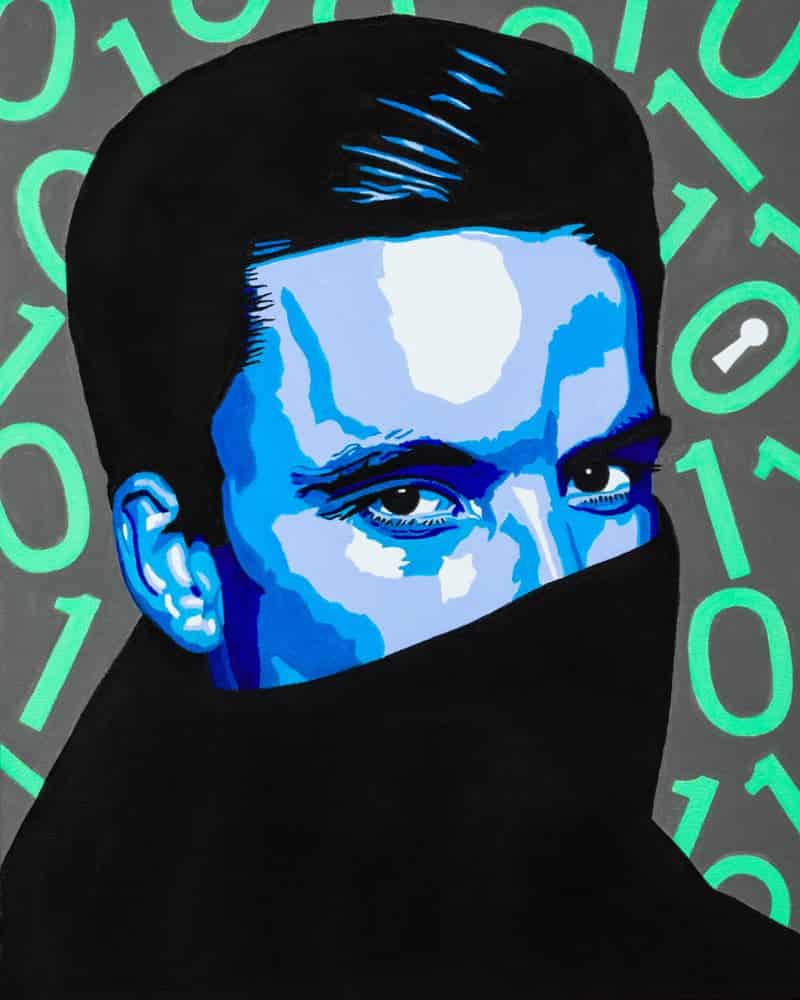Security by Design in a Tesla Driven World
When my daughters were younger, they took it upon themselves to invent the first flying car. This included drawing designs, testing out ways to fly (plastic bags and cardboard wings were, sadly, ruled out), and brainstorming stoplight systems for the sky. From that day forward, I knew that innovation (flying cars) and protection (stoplights in the sky) could and should coexist and happen simultaneously.
If you had told me at the start of my career 20 years ago that my favorite model for security by design would be drawn in crayon, I would’ve… totally believed you. I’m a sucker for my daughters. But that’s besides the point… My girls are grown now and while flying cars aren’t quite there yet, electric vehicles offer a remarkable blend of convenience, efficiency, and connectivity, transforming the way we experience transportation. In many ways, EVs are more computer than they are traditional car, which opens them up to hackers just like any other device.
What we know now is that innovation creates risk but that risk also creates innovation. Companies like Tesla cannot afford to have their EVs regularly hacked, as that would put their customers and passengers at huge risk. Imagine the destruction and liability of a hacker steering an EV off the road remotely. Consequently, Tesla has had to build security into their automobiles by design.
Security by design serves as the cornerstone for fortifying our connected cars to ensure safety and instill confidence in the ever-evolving automotive industry. Security by design is a transformative and powerful tool that gets cybersecurity experts all giddy.
Understanding Security by Design
Security by design means security built in from the start, during the “design” phase. It is an approach to system and product development that incorporates security considerations from the very beginning. For once, security is not an afterthought.
A Sample of Security by Design Principles |
|
| Threat Modeling | Conducting a systematic assessment of potential threats and vulnerabilities that could impact the system, and designing appropriate countermeasures to address them. |
| Defense in Depth | Implementing multiple layers of technical, procedural and physical controls to create a strong and comprehensive security posture. |
| Least Privilege | Granting users and processes only the minimum level of access and privileges required to perform their specific functions, reducing the potential attack surface. |
| Secure Default Configuration | Configuring systems and software with secure settings as the default, ensuring that security measures are in place from the outset. |
| Continuous Monitoring and Assessment | Implementing mechanisms to continually monitor, detect, and respond to security events and incidents. Regular assessments and audits help identify vulnerabilities and ensure ongoing compliance with security standards. |
| Secure Development Practices | Following secure coding practices, conducting thorough security testing, and implementing secure development methodologies to prevent and identify vulnerabilities early in the development lifecycle. |
| User Awareness and Training | Educating users about potential security risks, promoting best practices, and providing training on how to identify and respond to security threats. |
By adopting security by design principles, organizations can build more secure and resilient systems, reduce the likelihood of successful cyberattacks, and enhance overall cybersecurity posture. It helps to shift the focus from reactive measures to proactive security integration, ensuring that security considerations are an integral part of the design and development process.
Potential Electric Vehicle Cybercrime Vulnerabilities
- Over-the-Air Updates: Tesla’s cars boast a futuristic feature similar to giving your vehicle a software makeover. However, this convenience can inadvertently create an entry point for hackers to exploit vulnerabilities during the update process.
- Remote Control: Hackers could gain control over critical vehicle functions remotely, such as acceleration, braking, and steering, potentially compromising the safety of the occupants and others on the road.
- Theft and Unauthorized Access: Hackers could potentially gain unauthorized access to your vehicle, disable security features, and potentially steal the vehicle or valuable personal information stored within.
- Tracking and Surveillance: Hacked electric vehicles could be used as a means for tracking individuals’ movements or gathering sensitive personal data. This information could be used for identity theft or targeted attacks.
- Manipulating Vehicle Data: Hackers could tamper with the data collected and transmitted by the vehicle’s sensors and systems leading to false readings and inaccurate diagnostics that may affect performance and safety features.
- Ransomware Attacks: Hackers might employ ransomware tactics, locking the vehicle owner out of their own vehicle until a ransom is paid to regain control.
- Unauthorized Firmware Modifications: By gaining access to the vehicle’s firmware, hackers could make unauthorized modifications that impact the vehicle’s functionality, compromise its safety systems, or introduce vulnerabilities for future attacks.
- Privacy Breach: Hacked electric vehicles could expose personal information stored within the vehicle’s systems, such as contact lists, call logs, and location history.
Tesla’s “Security From the Start”
While we don’t have access inside of Tesla’s security measures, software or cloud network, they claim to take the following steps to secure their vehicles and connectivity. Only time will tell if their Security by Design is as robust as they claim.
| Encryption and Secure Communication | Tesla employs state-of-the-art encryption techniques to ensure secure data transmission between the vehicle and external servers. |
| Bug Bounty Program | Tesla encourages ethical hackers to identify vulnerabilities in their systems and report them so that weaknesses can be remedied. |
| Over-the-Air Updates (OTA) | While OTA updates present a potential vulnerability, they also serve as a powerful tool for Tesla to deploy security patches rapidly. |
| In-House Security Team | Tesla has assembled an elite squad that works tirelessly to stay one step ahead of potential threats. |
Business Implications: Maintaining Trust and Competitive Edge
In today’s interconnected world, trust is a valuable currency. The robust cybersecurity measures purportedly implemented by Tesla serve not only to protect the privacy and safety of its customers but also to maintain its reputation as an industry leader. If in fact Tesla continues to prioritize cybersecurity along with automobile safety, their profitability and reputation will create a long lasting competitive advantage in the market.
Revving Towards a Secure Future
Security today is about protecting our children’s tomorrow. And innovation makes that future a better one. Whether my daughters’ stop lights in the sky or Tesla’s Bug Bounty Program, cybersecurity by design is the revolution we are eager to see. We could all learn something from the creativity and curiosity of our kids. Cybersecurity is no exception.
___________________________
John Sileo is an award-winning keynote speaker who has entertained and informed audiences about the importance of cybersecurity in business for two decades. He is proud to have spoken at the Pentagon and Amazon, written four books on cybersecurity, and been inducted into the National Speakers Hall of Fame. He has appeared on 60 Minutes, NBC, ABC, Fox, CNN, Rachael Ray, and Anderson Cooper. John’s work has been quoted and published in The Wall Street Journal, The Washington Post, USA Today, and Kiplinger’s.
Looking for a customized speech to make your next event unforgettable? Call 303.777.3221 or fill out our contact form to connect with Sue, our business manager extraordinaire. She’ll work with you to brainstorm ideas and explore how John can tailor his speech to fit your needs perfectly.












